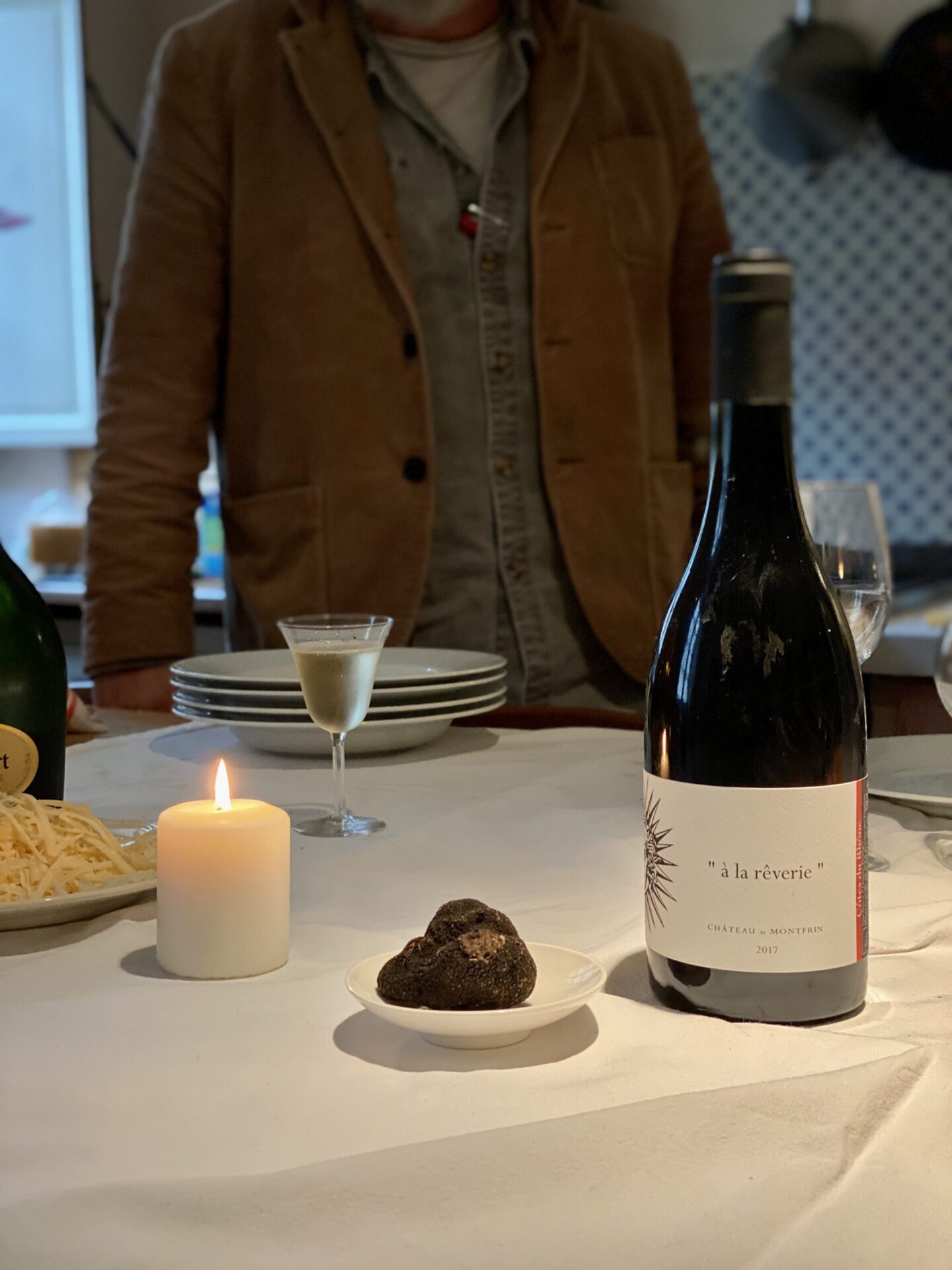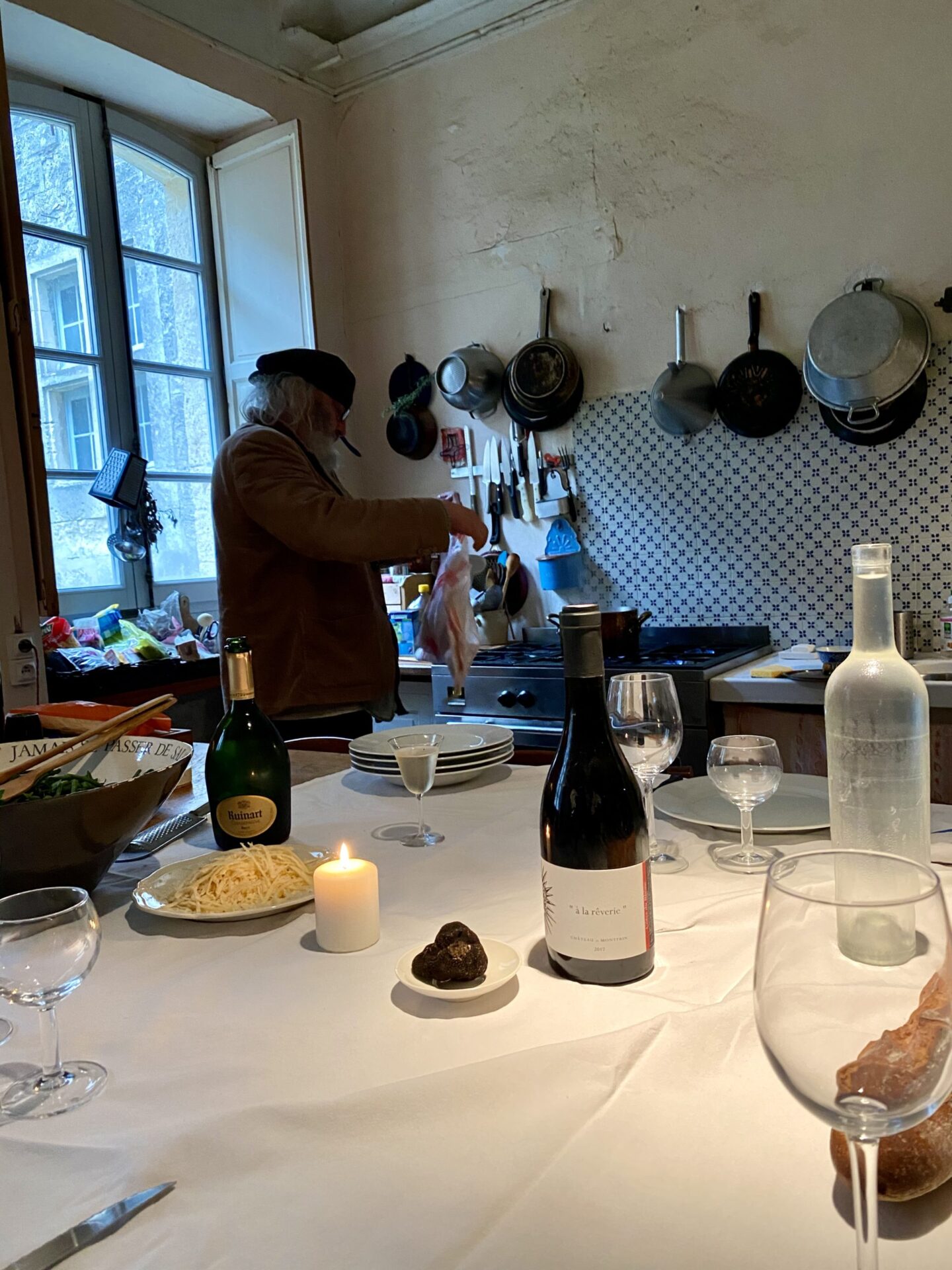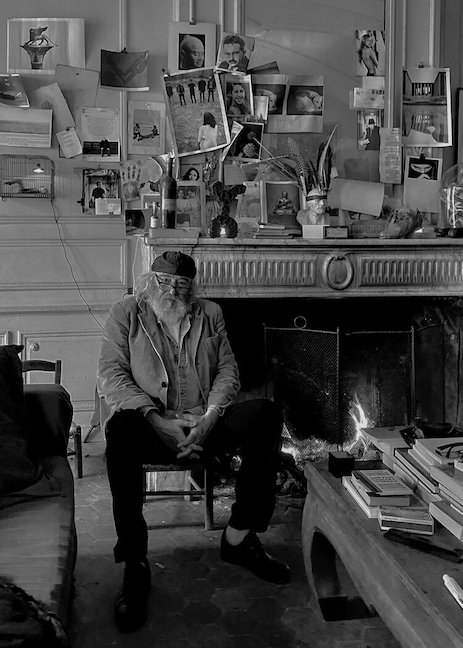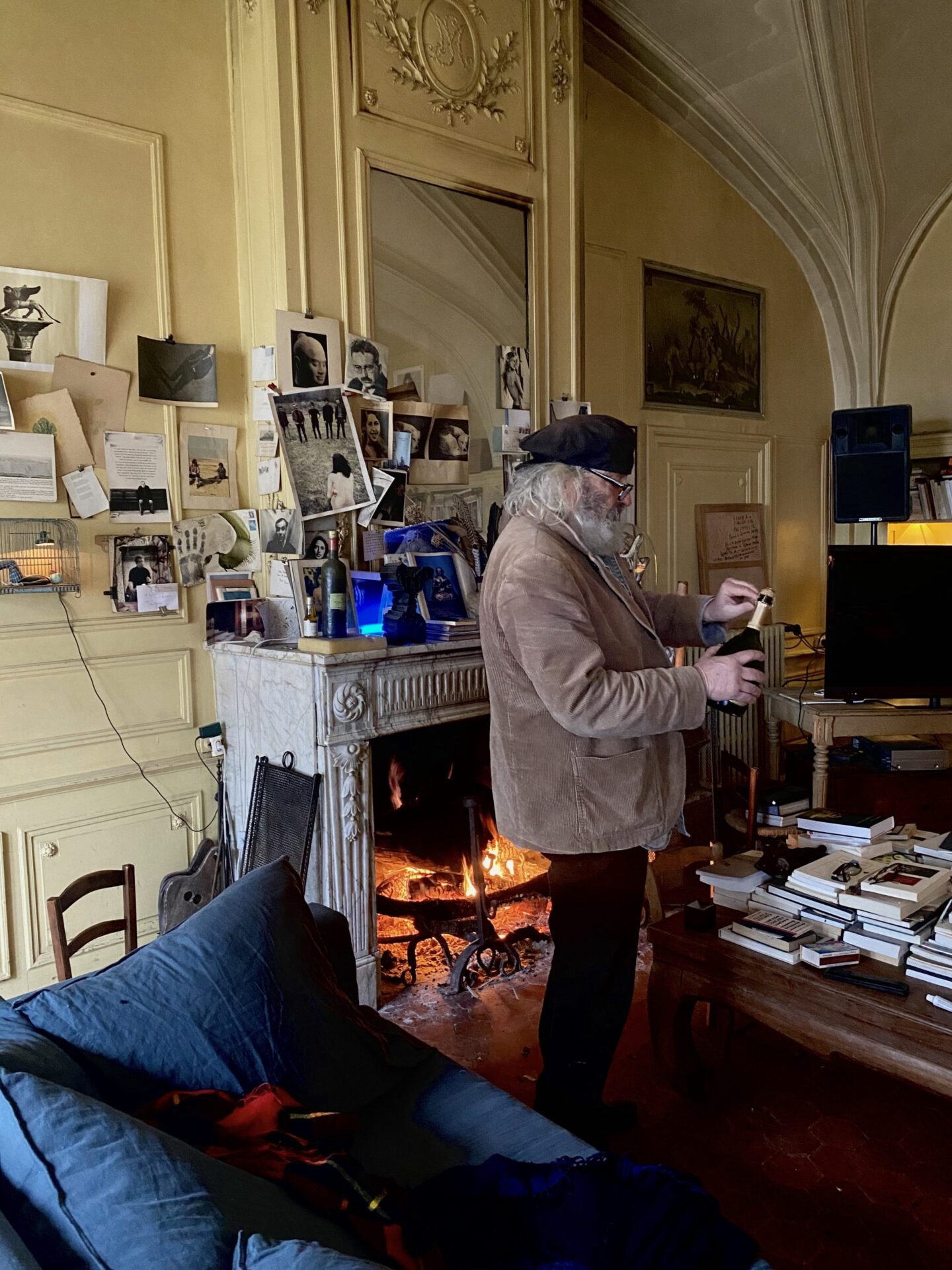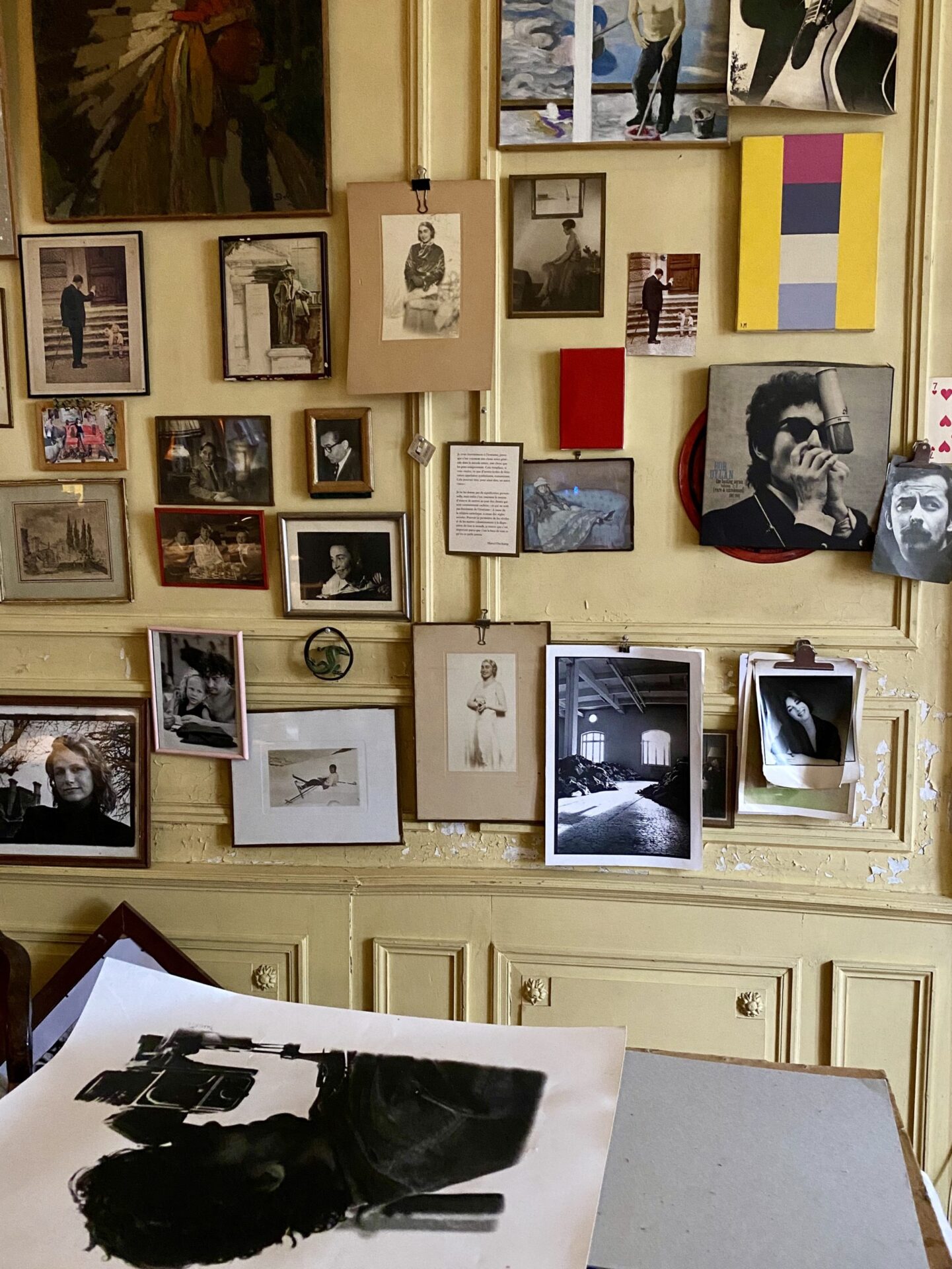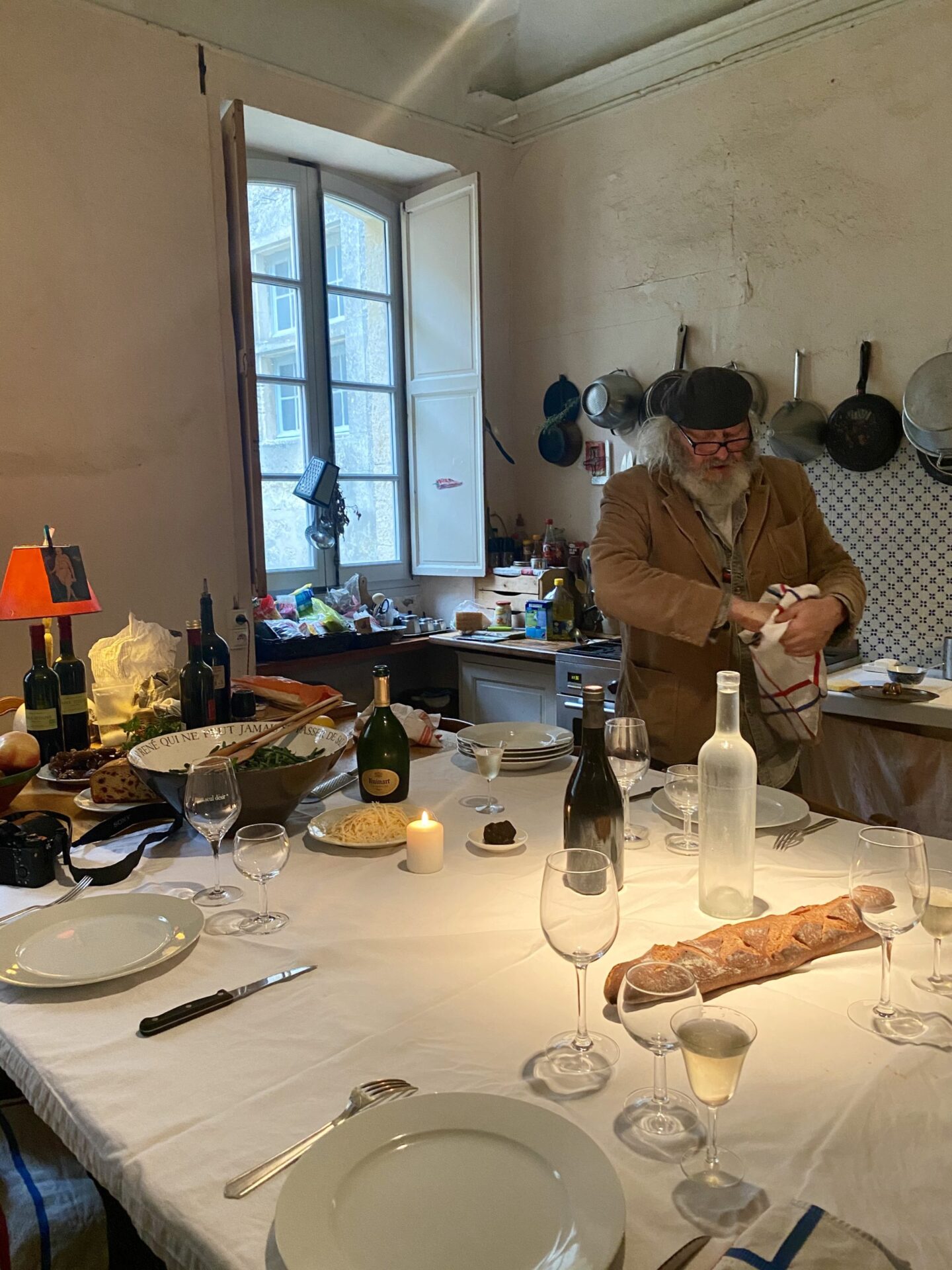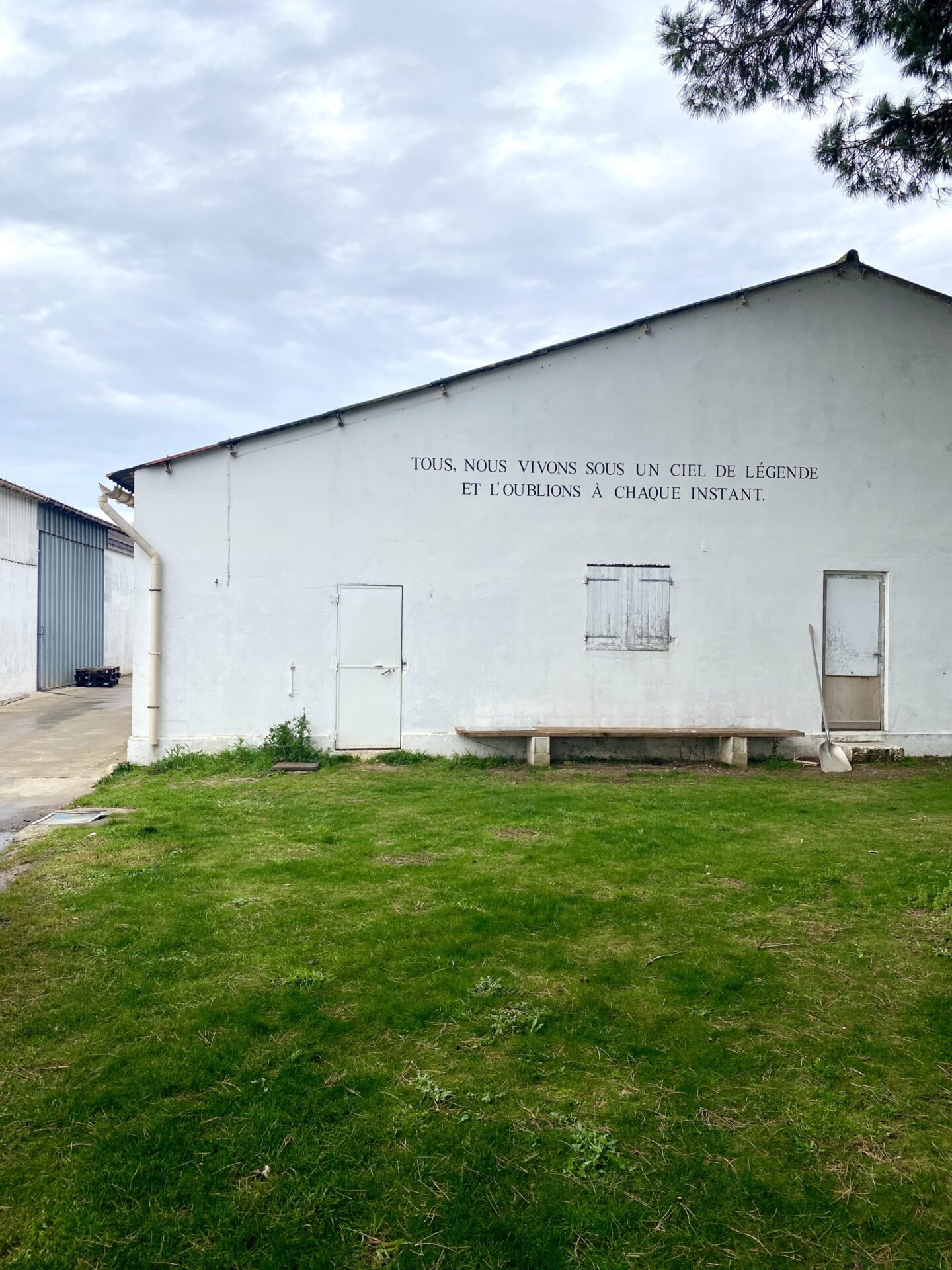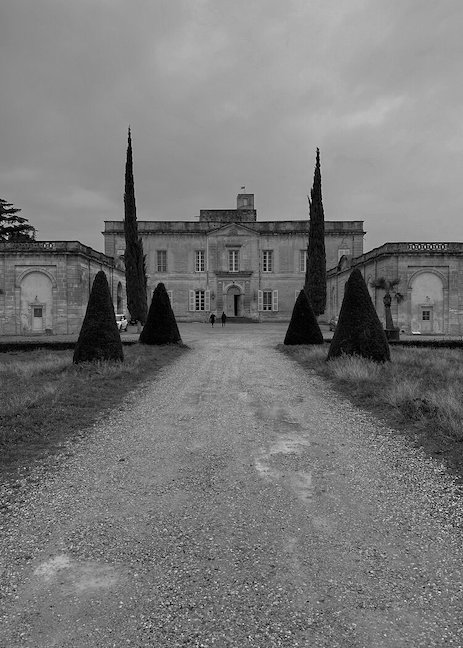2021 Château de Montfrin Cotes du Rhone ‘A La Reverie’ Rouge
“A la reverie” means “in a dream state,” which is the perfect way to describe how we felt the first time we tried this wine with Jean-René. Sure he charmed us with truffle pasta, but the the dreamiest thing about this wine is its ability to hold its own next to strong dishes without feeling heavy. The Syrah gives it oomph while the Grenache weaves it all together with a soft, silky ribbon.
Certified organic farming practices, native yeast fermentation, and only 1,400 cases produced.
- Tasting Notes black plum, morello cherry, orange rind, tobacco, licorice, lavendar, dried herbs
- Variety 80% Grenache, 15% Syrah, 5% Carignan
- Region France, Rhone Valley
- Volume 750ml
- Alcohol Volume 14%
- Table Talk Montfrin, from the Latin 'Mons Fremens' means, 'the mountain of wild beasts' because the animals fleeing the floods of the Rhône and the furious Gardons came to take refuge there.
$29.00
Out of stock
Lexi and Margaux discovered Château de Montfrin in 2019 through one of our partners, Paris Wine Company. After a sourcing trip in Burgundy they had the opportunity to meet Jean-René and visit his beautiful home which has been an important site for centuries, and played host to travelers and statesmen including Saint Francis of Assisi, Saint-Louis, Louis XIII, and Molière.
“Between Languedoc and Provence, between Rhône and Gardon, Montfrin, from the Latin ‘Mons Fremens’ means ‘the mountain of wild beasts’ because the animals fleeing the floods of the Rhône and the furious Gardons came to take refuge there. Today other animals live there, some even cultivate vines, olive trees…” – Jean-Rene de Fleurieu
Following their tour of the Domaine des Captives (vineyards and winery) and Moulin des Ombres (olive orchard and mill), they arrived at Château de Montfrin where Jean-René greeted them with a bottle of Ruinart Champagne. They spent the afternoon eating truffle pasta, drinking wine, and listening to his story. Jean-René makes films, has owned an art gallery in Paris, co-founded the well-known Paris fashion brand, Agnes B. and also has a wooly mammoth skeleton in his tank room. He is a true renaissance man.
Jean-René has about 500 acres of land split between vines and olive trees. He started producing wine and olive oil with the goal of creating local jobs and making delicious, affordable, organically produced wines and oil.
THE RHONE VALLEY, FRANCE
For ease of describing the Rhône Valley, we will associate the region by two distinct areas: The Northern Rhône and the Southern Rhône. The Northern Rhône, follows the River Rhône essentially from Vienne in the north down to Valence in the south. Many of their vineyards are planted on slopes situated next to the river as the valley is quite narrow and steep. There is a cold strong wind in this area, called the mistral, which can quickly damage the vines, so the valley serves as protection. The black grape variety, Syrah, dominates in the Northern Rhône. In fact, in many of the smaller appellations and crus, it is the only black grape variety allowed and produced. These wines tend to be a deep color and boast bold black fruit flavors with black pepper and florals. There are a few areas that allow for production of the white grape varieties: Viognier, Marsanne and Roussanne. Particularly, Condrieu and Château-Grillet appellations have a reputation for high-quality Viognier. The noteworthy crus of Northern Rhône for red wine include (but not limited to) Côte-Rôtie, Saint-Joseph, Hermitage, Crozes-Hermitage, and Cornas. To the south and closer to the Mediterranean Sea lies the much larger region of the Southern Rhône. With greater vineyard areas, the Southern Rhône is focused on predominantly red wine, but showcasing a vast range of red, white, and rosé wines from high-quality to inexpensive. Here the climate is considerably more warmer than in the north and the vineyards are on flatter terrain. The mistral winds are still of concern, so many of the vines are trained low to the ground for protection. To absorb some of the heat, many of the best vineyard sites have very stony soils. Particularly, in Châteauneuf-du-Pape, the stones (or galets) are large and completely cover the soil surface. Black grape varieties Grenache, Syrah, Mourvèdre, and Cinsault do best in this warm, sunny climate. Hence why you often see the term “GSM” Blend (meaning Grenache, Syrah, Mourvèdre) coined from this region, which many other regions have now adopted and use for their blends using these grape varietals. While white grape varieties are a minority to this region, Viognier, Marsanne, Roussanne, Clairette, Grenache Blanc, and Bourboulenc are grown here. Notable cru areas are Tavel, Lirac, Gigondas, Vacqueyras, and the infamous, Châteauneuf-du-Pape. Generic appellations of Côte du Rhône and Côte du Rhône Villages account for more than half of the entire production with the Southern Rhône, but don’t let the generic term fool you; These appellations, although not cru status, are also putting out some spectacular quality wines!



